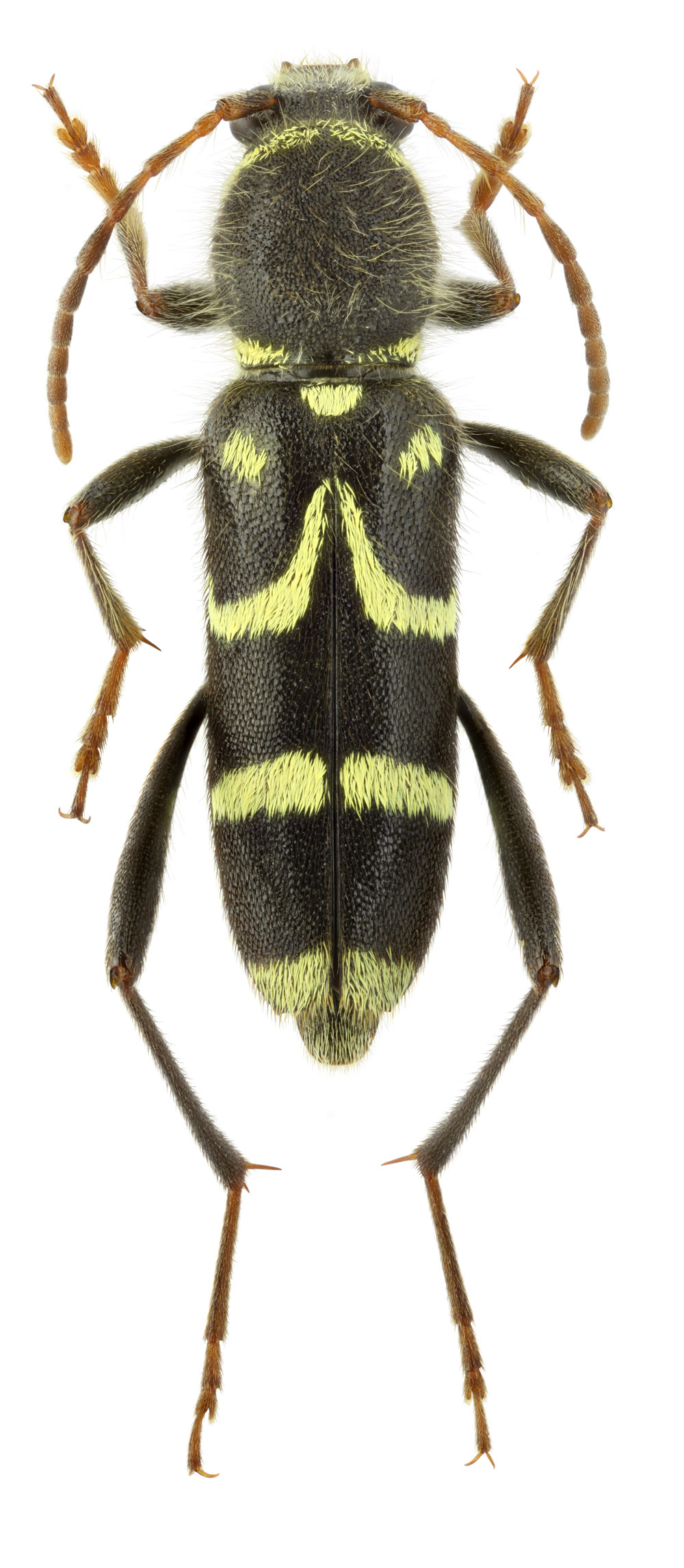| Author |
 Topic Topic  |
|
|
Max
Member Rosalia
  
Russia
721 Posts |
 Posted - 24/08/2017 : 01:28:16 Posted - 24/08/2017 : 01:28:16



|

354.8 KB
Hi to all, have a nice day! Easy question (maybe not ) )
I caugth this beetle in S Turkey, Mugla, Oludeniz env., 6.05.17. Male, 11 mm.
Appearingly it's C. rhamni, but without thin glabrous black fringe on elytral apex. It is normal for European populations?
I have some C. rhamni from E Ukraine and Georgia with this feature as essentially presented.
Some strange, for it should be C. r. temesiensis as well as Ukrainian ones.
Probably it`s something another but I have no idea.. |
|
|
znort
Member Purpuricenus
 
China
486 Posts |
 Posted - 31/08/2017 : 04:50:48 Posted - 31/08/2017 : 04:50:48



|
Hi Max.
According to Ozdikmen, rhamni ssp temesiensis have posterior yellow border of pronotum almost complete and front legs and antennae paler.
Clytus rhamni have a posterior border interrupted in the middle and antennae brownish, blackish or dark brown towards to distal end.
Clytus rhamni temesiensis Germar, 1824 occurs in West and South Turkey and the nominative C. rhamni rhamni Germar, 1817 occurs in
other parts of Turkey.
The other known subspecies, C. rhamni bellieri Gautier,1862, occurs in W Mediterranean, C Europe, Sicily and Italy.
The status of the spp bellieri and temesiensis are always doubtful. Some entomologists contest them. For example, you can find rhamni rhamni morpha in France and your specimen had to be temesiensis...
According your photos, for me legs and antenna and yellow posterior border are closed to rhamni rhamni. It's just an opinion.
In first I class all my rhamni in my collection from west to east and considering only single morpha. Maybe I'll finish my idea later.
Some photos in Slama web site
http://cerambycidae-slama.cz/fotky/6%20Cerambycinae/Clytus%20Laicharting,%201784.html
Look also and compare the distribution of theses subspecies in Titan since each author Sama, Danilevsky, Ozdikmen and others....
|
Chinese Cerambycidae |
Edited by - znort on 31/08/2017 05:40:05 |
 |
|
|
Francesco
Forum Admin
    
Luxembourg
9454 Posts |
 Posted - 31/08/2017 : 11:43:01 Posted - 31/08/2017 : 11:43:01




|
In my opinion, it is C. rhamni rhamni without consistent doubts.
I do not observe any difference with my specimens from Greece and Eastern Italy.
Here, you can observe further European specimens.
Clytus rhamni temesiensis is a more northern subspecies with respect to the nominal form.
The distributional data furnished by Özdikmen are probably inverted. Usually, they were published in some not-referred self-produced magazine. |
 |
|
|
Max
Member Rosalia
  
Russia
721 Posts |
 Posted - 31/08/2017 : 18:48:42 Posted - 31/08/2017 : 18:48:42



|
| Ok. Thanks so much! |
 |
|
| |
 Topic Topic  |
|
|
|


